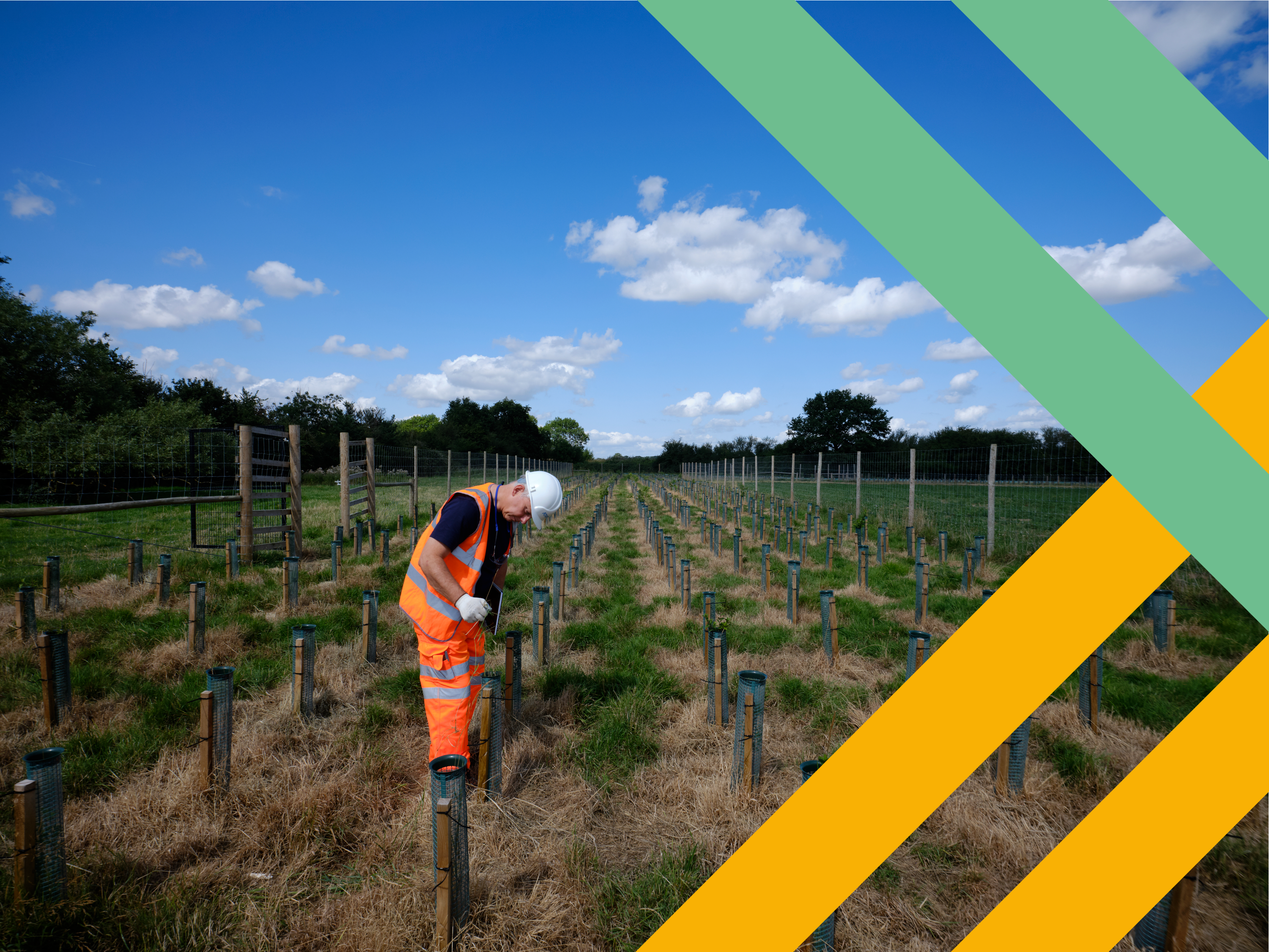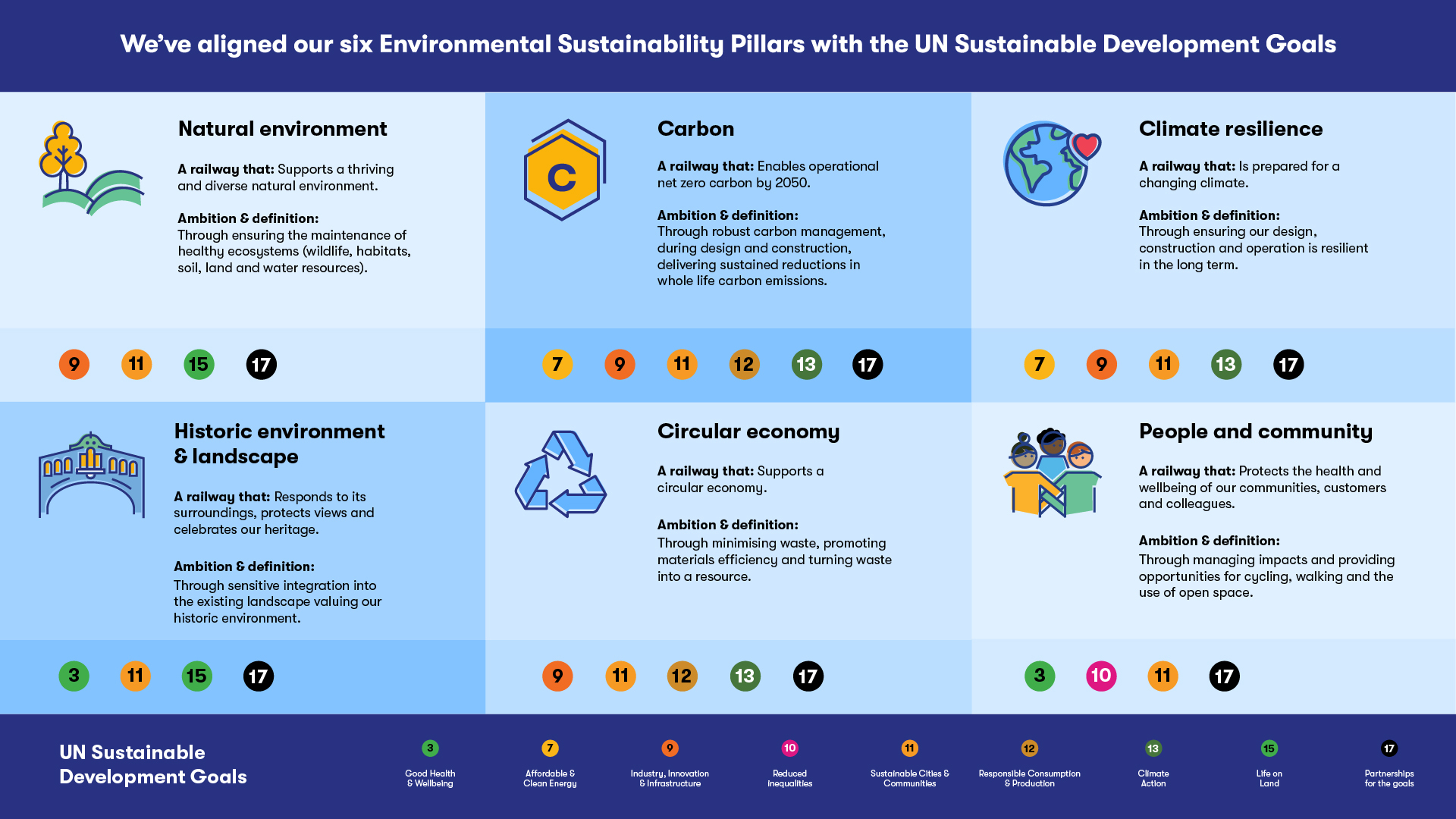Creating a railway that’s greener for the environment is at the heart of our decision-making at East West Rail.
As one of the UK’s largest railway projects, we have an important role in addressing the environmental challenges faced by us all. That’s why we’re aiming to make East West Rail a sustainable transport solution, and have made greener for the environment one of our five outcomes.
Find out more about environment & sustainability at East West Rail below.

Aligning with the UN Sustainable Development Goals
The United Nations 17 Sustainable Development Goals (SDGs) are our world’s call to action on the most pressing challenges and opportunities facing humanity and the natural world.
They recognise that ending poverty and other deprivations must go hand-in-hand with strategies that improve health and education, reduce inequality, and spur economic growth – all while tackling climate change and working to preserve our oceans and forests. In practice, they are designed to be a ‘blueprint to achieve a better and more sustainable future for all’.
Recognising this and to underline our approach to the environment, we have aligned our nine environmental principles with ten of the UN SDGs.


Zero emission passenger services by 2050
East West Rail provides the opportunity to deliver sustainable low carbon journeys for the communities along our route, whilst also supporting the UK's transition to an overall net zero carbon economy.
In line with our ambitions to create a net zero passenger railway by 2050, we're proposing that East West Rail runs trains using discontinuous electrification. You can learn more about what this means by watching the short video below.

